I sometimes hosted post-concert talks, mostly as an m.c.
Once I was invited to be Santa Claus for a Christmas concert, being asked if I’d like to conduct the NMSO while in costume. I jumped at the chance.
So, pillow-stuffed and red-suited with a belled cotton hat hanging over the ears, and a low-budget white beard covering my own, I ho-ho-ed up the aisle and, turning to the orchestra, picked up my baton.
No Bach, of course. Leroy Anderson’s “Sleigh Ride” was my gig. I’d heard that as much as I’d ever want to hear on radios and sound systems everywhere at that time of year. But this was different. I was to lead the musicians, many of whom I already knew.
I raised my baton and the orchestra started doing its thing. Often I could detect, only fractionally delayed, what was coming next musically, where the main melodic line was coming from. So I was able to make it look like I was cueing in the musicians. And, when it came to the clip-clopping sound, I even anticipated that and pointed to percussionist Chris Shultis. Or for the trumpet sounding like a whinnying horse, I was ready to point to Kenny Anderson. I didn’t have any ability to wave my stick to mark tempo, of course. But afterwards several people whom I knew said that they were really impressed with my conducting, because it looked like I knew what I’d been doing.
Quite a contrast to my day as a nine-year-old conducting Sammy Kaye’s Swing and Sway Orchestra. (See way above.)
This was a time when I met and interviewed many visiting artists, those who appeared with the Symphony and those connected to the Santa Fe Opera and the Santa Fe Chamber Music Festival.
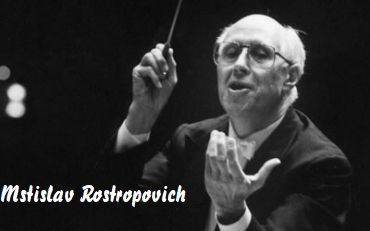
For example, when Mstislav Rostropovich brought the National Symphony for a concert, I was there at his press conference. His program looked very conventional, and, despite being the official Washington, D.C., orchestra, there was no American music in it. I asked him why. He affectionately reached out and grabbed my hand, saying, “Because, darling, that is what your concert producers choose from repertoire.” He grinned, not at all offended.
Clearly, I was still a kind of edgy New Yorker. But, after all, I’d been a news reporter and an interviewer for years and didn’t believe in so-called “softball” questions.
When Ned Rorem came to the Santa Fe Chamber Music Festival, we connected for the third time, having done so in New York in the ’60s and ’70s. By then, Rorem was regularly lamenting that his kind of music, melodic, neo-romantic, was being overshadowed by more complex, somewhat atonal, avant-garde compositions. He got around to that again in the course of this interview. “Ned,” I asked him, “given how you feel, has anyone ever called you a crybaby?”
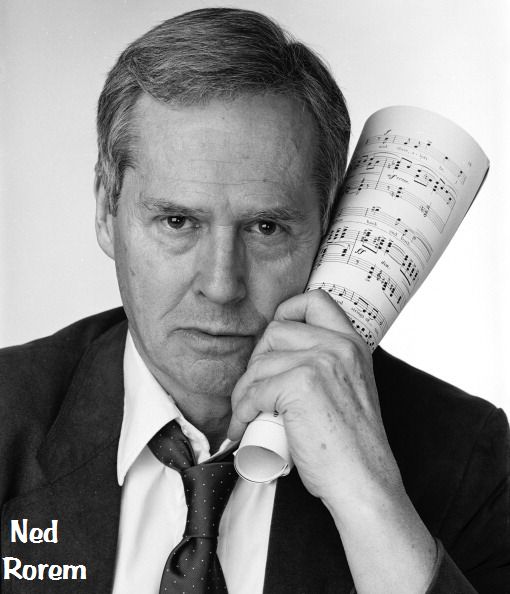
“It’s my function to be a crybaby,” he replied. And that, yes, he’s heard that, but his laments were about the plight of many American composers and that, despite much critical appreciation of his work, “I’m still a crybaby.” As for getting such attention and how that might get him more attention, “It certainly doesn’t hurt.”
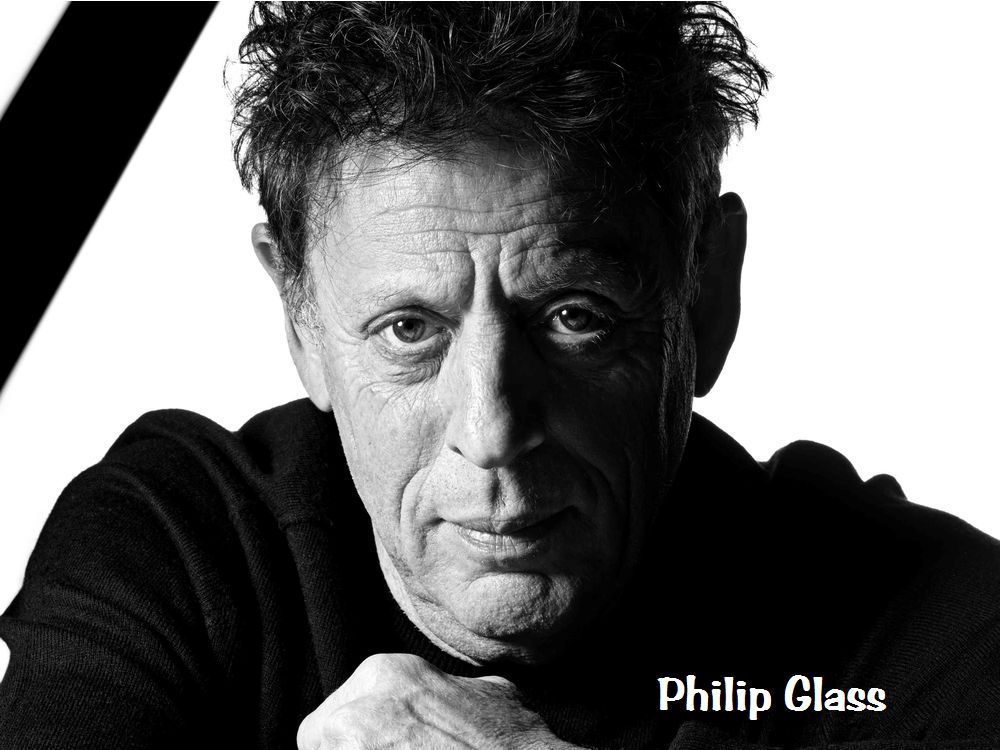
From a different sound spectrum, Philip Glass came to Santa Fe in 1983. He and his ensemble gave a concert of his own music at Santa Fe’s Lensic Theater. Hannelore and I went to that concert and, after about an hour-and-a-half without an intermission, decided we’d heard enough of what sounded like the same thing over and over. AND REALLY LOUD. We left.
Prior to going I’d interviewed him for broadcast at KHFM and some of that was also printed in the Santa Fe-based magazine Notebook.
“Do people find your music boring after it goes on for a long time?” I asked.
“People say that about Bruckner,” he responded. “They say it about Satie or Beethoven. You always have people who like or don’t like something. It can’t be for everyone. There’s almost no work of art of any kind which has had that kind of success.”
We talked about changes in concert music, from a previously dominant trend, “not particularly accessible,” I called it. He agreed that that was true. But then there was a new movement towards tonal music, such as Rorem’s. How were they related?
“I think that what’s happening in my music is part of the whole general thing. This is one of the most exciting times to be around and writing. You know, we can even just be openly entertaining.”
“Would you call what you’re doing experimental?”
“Well, when we talk about experimental music, we don’t mean that it will be something people aren’t going to like. These days audiences don’t expect uniformity; diversity is something which has become one of the hallmarks of our time.”
“Do you have a label for your style?”
“I don’t know of any composer that would care to label himself…The music I write is what means something to me, that speaks to me and speaks to other people. I don’t need another label.”
Glass came to Albuquerque in October 1987. The Hiland Theater was the site for two screenings of Koyaanisqatsi,which was a film with live music. Friend David Noble, the music critic for the Albuquerque Journal, wrote that there were 13 musicians and technicians to perform the score. The film was conceived and directed by Santa Fe’s Godfrey Reggio.
The full title was actually Koyaanisqatsi: Life Out of Balance. It primarily consists of slow motion and time lapse footage of cities and natural landscapes, in effect transposing them to make a statement. There was no dialogue. Only music. Actually the Hopi word means “unbalanced life.”
David said that some of the footage was shot in the Four Corners area of New Mexico.
A few years later, in 1988, although no longer at KHFM (see below, “Firing #4”) I interviewed Terry Riley, a sort of Glass musical cousin or maybe uncle. We discussed, of course, 1964’s In C, which is often cited as the first minimalist piece to get wide-spread attention, before that term actually was used. He agreed with the definition and that what he created had a major influence on the idea of minimalism which came along not long thereafter. “It was a totally new concept,” he pointed out, partially influenced by North African music and experiments with tape loops.
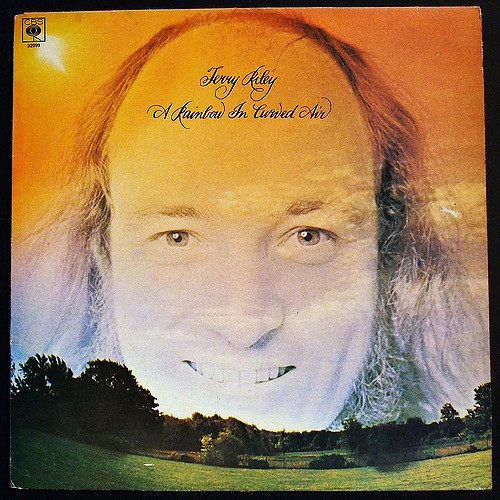
We spoke about A Rainbow in Curved Air (1969), which I personally admired and had broadcast during my second WNCN years, when the station was at its least-conservative- programming best. Riley described that piece as becoming popular in an unexpected way, that people told him about putting it on automatic replay on record changers, and that he got mail from those who said that they listened to it all day.
“Trance Music, right?” I asked. “Did it bother you that people were getting stoned to your music?”
“No, I’m happy when people get stoned on my music. That’s one of the best ways.”
The interview with Riley was one of several at a composer’s symposium in Telluride, CO, in August 1988. The setting was magnificent and the conversations fascinating.
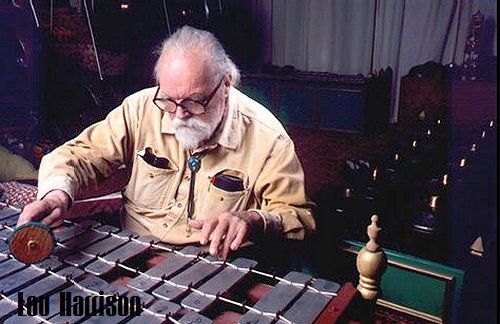
Particularly interesting was a conversation with Lou Harrison, who reminded me and listeners that calling Asia the Far East made no sense, that that was Eurocentric, and for him especially, living in California, Asia was the West. He also pointed out that his music often had Asian influences, so much so that critics heard those influences even when they weren’t there.
We discussed at length his decade-long connection with Charles Ives. After an initial letter to Ives, expressing interest in his work, Ives sent Harrison “a crate” of photostats of scores, especially chamber music, asking Harrison for assistance in editing and copying. Eventually Harrison even completed some of the works, with a few insertions here and there.
Ives, of course, paid Harrison but chided him about getting paid, writing, “You sure know how to compose but you don’t know how to write bills.” Ives, as is well known, had supported his own writing with proceeds from his highly successful insurance agency. Harrison said that, given such self-underwriting, Ives believed that music should be free for everyone and so regularly gave money to contemporary composers. And even made Harrison one of the heirs to the royalties, along with other composers. “That sure helps sometimes,” Harrison laughed. Harrison perpetuated that practice, apportioning some of that money to younger composers. “I must say I’ve made some good choices,” he added. Harrison declined to name any of the recipients.